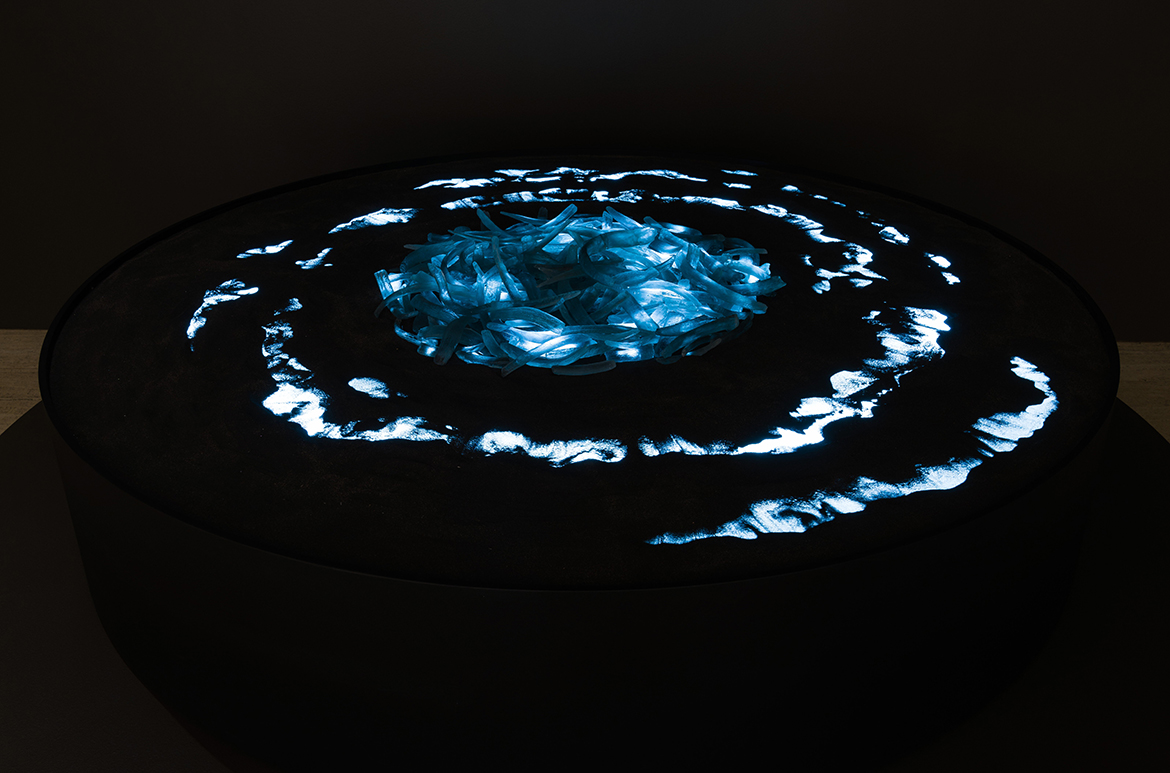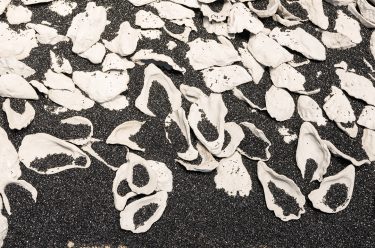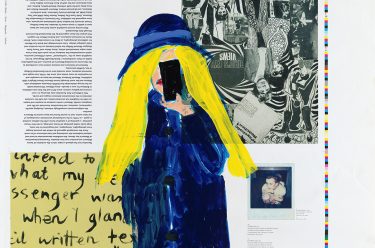From dugonging (1847–1969) to mineral mining (1949–2019), industry has had disastrous cultural and environmental ramifications on Minjerribah (North Stradbroke Island). In The tide waits for no one 2020–21 (illustrated), Megan Cope addresses these complex social histories, examining their impacts on the land and on generations of its Traditional Owners, the Quandamooka people.
At the turn of the twentieth century, Minjerribah became home to a booming dugong industry that produced oil, bones, hides and meat. Early colonists worked with Quandamooka people to produce dugong oil that was commercialised and exported. Evidence of that now-banned industry — old glassware and brittle bones — can be found across the island’s landscape, particularly in eroding dunes.
Megan Cope ‘The tide waits for no one’ 2020–21

To recall this history, Cope has carefully cast old dugong bones found on the island in murky grey glass. While the artist could have made the casts with glass made from newly mined silica — taken from places such as Minjerribah — instead Cope has chosen to use glass tubes from bulky cathode-ray tube televisions. Since they contain a high concentration of lead, these units are difficult to recycle; Cope, however, gives this material new life.
The tide waits for no one points to the need to create industries and artworks that are respectful to the environment.
Edited extract from Embodied Knowledge: Queensland Contemporary Art, QAGOMA, 2022

‘Embodied Knowledge: Queensland Contemporary Art’ is in Queensland Art Gallery’s Gallery 4, Gallery 5 (Henry and Amanda Bartlett Gallery) and the Watermall from 13 August 2022 to 22 January 2023.
Acknowledgment of Country
The Queensland Art Gallery | Gallery of Modern Art (QAGOMA) acknowledges the Traditional Owners of the land on which the Gallery stands in Brisbane. We pay respect to Aboriginal and Torres Strait Islander Elders past and present and, in the spirit of reconciliation, acknowledge the immense creative contribution First Australians make to the art and culture of this country. It is customary in many Indigenous communities not to mention the name or reproduce photographs of the deceased. All such mentions and photographs are with permission, however, care and discretion should be exercised.
#QAGOMA


